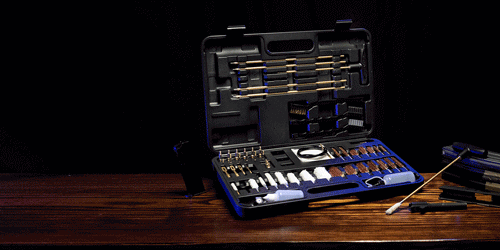Foreword
The word “tactical” is often thrown around in conversations about military gear, survival equipment, and outdoor adventures, but what does it truly mean? In short, “tactical” refers to a specific approach or strategy aimed at achieving particular goals, often in challenging or high-pressure environments. It involves careful planning, skillful execution, and using the right tools to navigate complex situations. Let’s dive into the term, its significance, and how it applies to various fields, especially in the context of outdoor activities, survival, and personal protection.
Defining "Tactical"
At its core, "tactical" is derived from military strategy, where it refers to the use of specific techniques or tools to address immediate objectives in the short term. Unlike "strategic," which focuses on long-term plans and overarching goals, tactical thinking is about how to approach specific, time-sensitive problems. It often involves making calculated decisions in unpredictable and dynamic environments.
In a general sense, “tactical” can apply to any action, plan, or tool designed to improve efficiency, success, and safety in critical situations. It is most commonly associated with the military, law enforcement, and security personnel, but over the years, the concept has permeated other areas like outdoor activities, self-defense, and even sports.
Tactical in the Military and Law Enforcement
In military and law enforcement settings, "tactical" refers to the methods and tools used for achieving specific operational goals. For example, tactical operations could involve specialized combat techniques, precise maneuvers, or stealth operations designed to neutralize threats or complete a mission effectively.
Tactical units often rely on a combination of physical skills, mental acuity, and advanced equipment to operate efficiently under pressure. This includes everything from tactical communication systems to weapons, vehicles, and protective gear.
In law enforcement, tactical officers, such as SWAT teams, are specially trained to handle high-risk situations like hostage rescues, armed standoffs, and counter-terrorism operations. Their training and gear are tailored to ensure quick, decisive, and safe outcomes in complex, life-threatening scenarios.
Tactical Gear: Essential for Performance and Safety
The rise of tactical gear in the civilian world can be traced back to a growing interest in military-style clothing and equipment that offers practical benefits in various environments. Tactical gear refers to equipment and tools designed for maximum utility, durability, and performance under tough conditions. It is typically built for ruggedness, versatility, and ease of use.
Some common tactical gear includes:
- Tactical Vests: These are often equipped with MOLLE (Modular Lightweight Load-carrying Equipment) webbing, pouches, and compartments for organizing gear like ammunition, medical supplies, and radios.
- Tactical Boots: These are durable, comfortable, and provide support for demanding activities, offering features like waterproofing, ankle protection, and enhanced grip.
- Tactical Flashlights: These are powerful, long-lasting, and designed to provide illumination in low-light situations, often with adjustable brightness and focus settings.
- Tactical Backpacks: A compact, yet efficient solution for carrying essential items like food, water, medical supplies, and tools. Many have specialized compartments for firearms, knives, and other gear.
- Tactical Gloves: Designed for dexterity and protection, these gloves are perfect for handling weapons, tools, and gear in extreme conditions.
Tactical gear is widely used by hunters, preppers, outdoor enthusiasts, and those engaged in survivalist activities. Its utility extends to both practical and emergency situations where quick access to equipment can make all the difference.
Tactical in Outdoor and Survival Situations
In outdoor activities like hunting, hiking, or camping, “tactical” often describes an approach focused on preparedness and situational awareness. Tactical thinking in the wild means planning for every potential scenario, carrying the right gear, and ensuring you’re ready to deal with unexpected challenges, such as weather changes, wildlife encounters, or injuries.
For instance, a tactical backpack for hunting might include tools for self-defense, communication devices, survival knives, first aid kits, and even a portable gun cleaning kit like the Gloryfire Tactical Gun Cleaning Kit, ensuring that your firearm is ready for action during a hunting expedition.
Similarly, tactical clothing—such as a tactical poncho, jacket, or vest—provides specialized features like camouflage, weather resistance, and functionality in outdoor environments. Tactical apparel is often designed to provide protection, flexibility, and utility, helping you stay safe, comfortable, and efficient when navigating through challenging terrain.
Tactical for Self-Defense and Personal Protection
For civilians, “tactical” frequently refers to self-defense tactics, which involve using a blend of practical skills and tools to protect oneself from harm. Tactical self-defense might include using a firearm, knife, or other means to neutralize a threat in a dangerous situation. But it also includes tactical thinking—being aware of your surroundings, recognizing potential threats, and knowing how to react appropriately.
Tactical training for civilians often covers a wide range of topics, including:
- Situational Awareness: Understanding the environment around you and spotting potential dangers before they escalate.
- De-escalation Tactics: Using communication and body language to avoid confrontation when possible.
- Defensive Techniques: Training in unarmed combat, using weapons for defense, and mastering self-defense tools.
- Escape and Evasion: Knowing how to safely remove yourself from dangerous situations if necessary.
The goal of tactical self-defense is to equip individuals with the skills and tools necessary to protect themselves, their families, and their property, especially in life-threatening situations.
Tactical in Sports and Fitness
Interestingly, the term “tactical” has even made its way into sports and fitness. “Tactical training” is a form of physical conditioning that emphasizes strength, agility, endurance, and mental toughness—qualities essential for individuals working in high-risk professions or situations.
In tactical fitness programs, participants often engage in exercises that simulate real-world scenarios, such as running, climbing, lifting heavy objects, or carrying gear. These workouts are designed to build stamina and strength for people who might find themselves in physically demanding situations, such as military personnel, law enforcement officers, or even hunters and outdoor enthusiasts.
Tactical: More Than Just a Buzzword
While the term “tactical” may have once been closely associated with military and law enforcement contexts, it has evolved to encompass a broader range of applications. Whether in outdoor adventures, personal defense, or fitness, tactical principles involve preparedness, strategic thinking, and using the right tools for the job. Tactical gear and strategies are designed to help individuals perform better, stay safe, and navigate complex environments with confidence.
In the world of hunting and outdoor survival, for example, the right tactical gear can make all the difference, ensuring you're well-equipped to handle whatever challenges the wild throws your way. It’s about being smart, prepared, and ready for anything.





